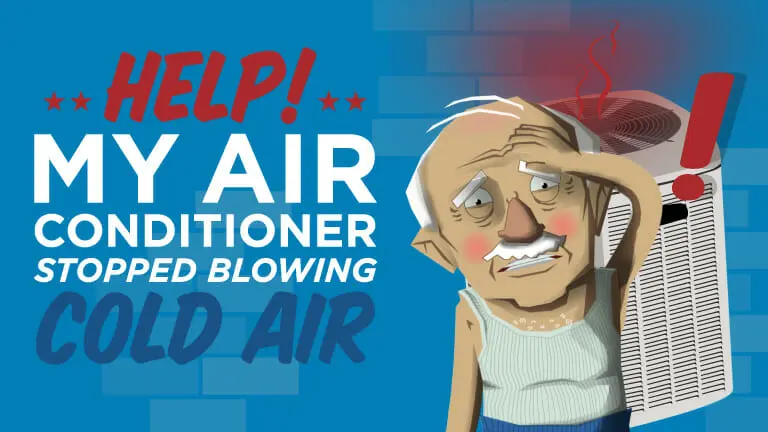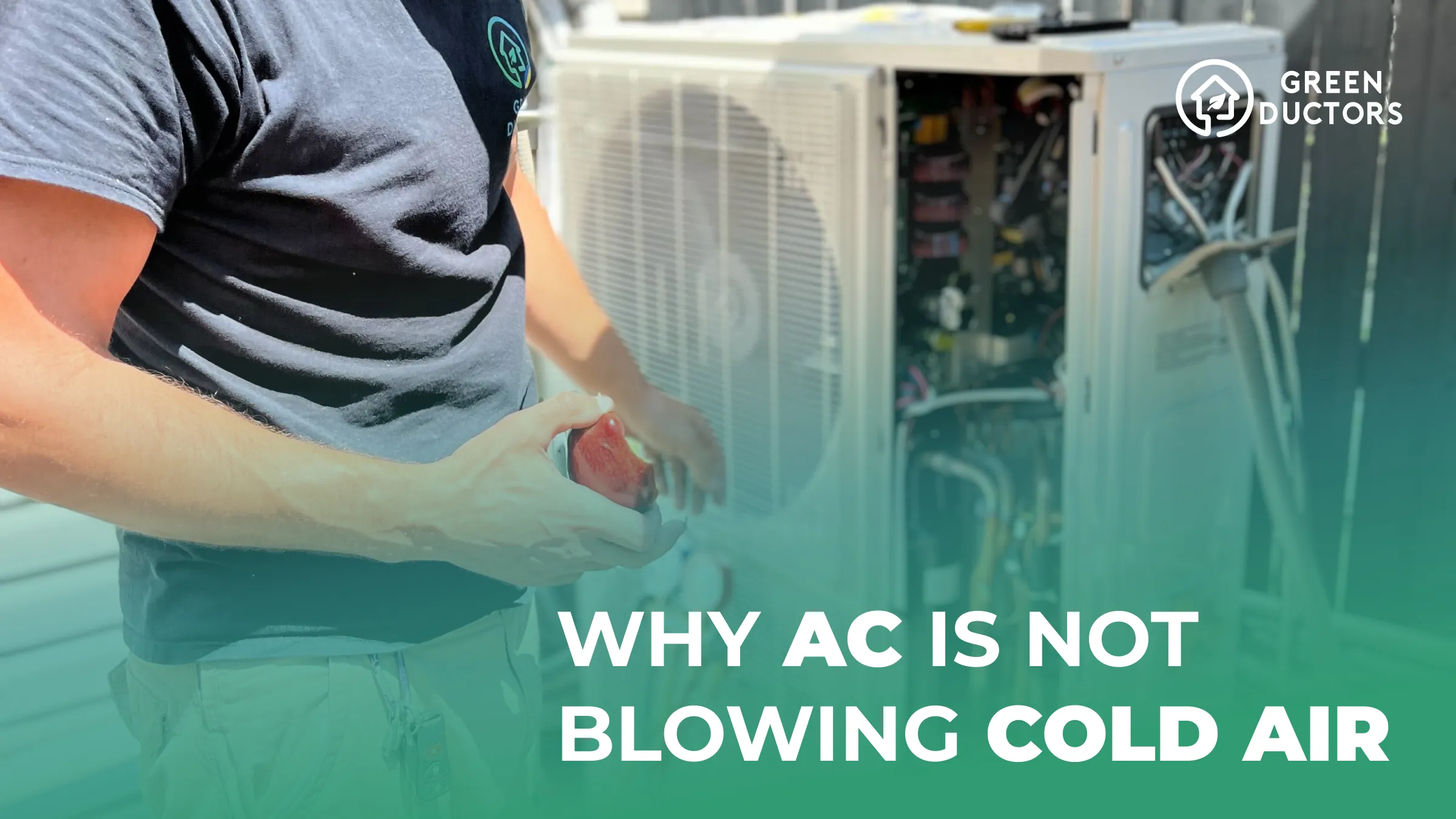Air Conditioner Stopped Blowing Cold Air

It's a sweltering summer day, and suddenly, your air conditioner stops blowing cold air. Panic sets in, visions of a long, uncomfortable night loom large. Before you call a repair technician, let's walk through some basic troubleshooting steps you can safely perform yourself. This guide will help you identify common issues and potentially save you time and money. Remember, safety is paramount. If at any point you feel uncomfortable or unsure, especially when dealing with electricity, gas, or complex parts, stop and call a qualified professional.
Step 1: The Obvious – Power and Settings
Let's start with the simplest things. It's surprising how often the problem is a simple oversight.
Checking the Power
- Circuit Breaker: Go to your circuit breaker panel and check the breaker for the air conditioner. Look for a tripped breaker (it will be in the "off" or middle position). Reset it by flipping it all the way to the "off" position and then back to the "on" position.
- Power Cord (Window Units): Ensure the power cord is securely plugged into the outlet. If possible, try a different outlet to rule out a faulty outlet.
- Battery Check (Thermostat): A thermostat with dead batteries can cause your AC to stop working, even if the AC unit itself is fine. Replace the batteries with fresh ones.
Thermostat Settings
- Mode: Make sure the thermostat is set to "Cool" or "AC" and not "Heat" or "Fan Only".
- Temperature: Ensure the set temperature is lower than the current room temperature. It seems obvious, but double-check!
- Fan Setting: Set the fan to "Auto" instead of "On". In "On" mode, the fan runs continuously, even when the compressor isn't cooling, making it seem like the AC isn't working.
- Programming: Review your thermostat's programming. It's possible a schedule is preventing the AC from running when you expect it to.
Step 2: Airflow Obstructions – Vents and Filters
Poor airflow can severely hamper your AC's ability to cool your home. Restricted airflow forces the unit to work harder and can even cause it to freeze up.
Check Vents
- Open Vents: Ensure all vents in your home are fully open and unobstructed. Close vents in unused rooms only after carefully considering your system's design, as this can sometimes negatively impact overall system efficiency. A professional HVAC technician can advise on proper vent usage.
- Clear Obstructions: Make sure furniture, curtains, or other objects aren't blocking any vents.
Inspect the Air Filter
- Locate the Filter: The air filter is usually located in the return air vent or inside the air handler unit. Consult your owner's manual if you're unsure where to find it.
- Check for Dirt: Remove the filter and inspect it. If it's visibly dirty or clogged with dust, debris, or pet hair, it's time to replace it. A dirty filter restricts airflow, making the AC work harder and reducing its cooling efficiency.
- Replace or Clean: Replace disposable filters with a new filter of the correct size (note the size printed on the old filter). If you have a washable filter, clean it with water and mild detergent, allow it to dry completely before reinstalling.
- Frequency: A good rule of thumb is to replace your air filter every 1-3 months, depending on usage and the air quality in your home. Homes with pets or allergies may require more frequent filter changes.
Step 3: Outdoor Unit Inspection (Condenser)
The outdoor unit, or condenser, is responsible for releasing heat from your home. If it's blocked or malfunctioning, it can't do its job effectively.
Clear Debris
- Safety First: Before inspecting the outdoor unit, turn off the power to the AC at the breaker panel.
- Remove Obstructions: Clear away any leaves, grass clippings, branches, or other debris from around the unit. Pay particular attention to the fins, the thin metal strips surrounding the unit.
- Clean the Fins (Carefully): Use a garden hose with a gentle spray nozzle to clean the fins. Be careful not to bend or damage them. You can also use a fin comb, available at most hardware stores, to straighten any bent fins.
- Proper Airflow: Ensure there's adequate space around the unit for proper airflow. Generally, you should have at least 2-3 feet of clearance on all sides.
Listen for Unusual Noises
- Strange Sounds: After restoring power, listen to the outdoor unit while it's running. Note any unusual noises, such as grinding, squealing, or rattling. These noises could indicate a problem with the compressor, fan motor, or other components, and usually require professional attention.
Step 4: Check for Ice Buildup
Ice buildup on the evaporator coils (usually located inside the indoor air handler) can prevent the AC from cooling effectively. This is often a symptom of another underlying problem, such as low refrigerant or restricted airflow.
Inspect the Indoor Unit
- Locate the Coils: Accessing the evaporator coils may require removing a panel on the indoor air handler. Turn off the power to the AC before removing any panels.
- Look for Ice: Visually inspect the coils for ice buildup. Even a small amount of ice can significantly reduce cooling performance.
If Ice is Present
- Turn Off the AC: Turn off the AC and set the thermostat to "Fan Only". This will allow the fan to run and help melt the ice.
- Check Airflow Again: Re-check the air filter and vents for any obstructions. Ensure proper airflow to prevent the coils from freezing again.
- Wait for it to Melt: Allow several hours for the ice to melt completely.
- Monitor After Restarting: After the ice has melted, turn the AC back on and monitor its performance. If the ice returns quickly, it indicates a more serious problem that requires professional attention, such as a refrigerant leak.
Step 5: Condensate Drain Line
Your AC unit produces condensation as it cools the air. This condensation needs to drain properly; otherwise, it can cause water damage and potentially shut down your AC.
Locate the Drain Line
- Exterior Pipe: The condensate drain line is typically a PVC pipe that exits the house near the outdoor unit.
- Indoor Access: It can also sometimes be accessed near the indoor air handler.
Check for Clogs
- Visible Obstructions: Look for any visible obstructions in the drain line opening, such as algae, dirt, or insect nests.
- Wet/Dry Vacuum: Use a wet/dry vacuum to try to suck out any clogs. Attach the vacuum hose to the end of the drain line and turn it on. This may dislodge any debris blocking the line.
- Vinegar Flush: If the vacuum doesn't work, try flushing the drain line with a cup of white vinegar. Vinegar can help dissolve algae and mineral buildup. Pour the vinegar into the drain line and let it sit for about 30 minutes, then flush it with water.
When to Call a Professional
While many air conditioner problems can be resolved with simple DIY troubleshooting, some issues require the expertise of a qualified HVAC technician. Do not attempt to repair the following problems yourself:
- Refrigerant Leaks: Refrigerant is a hazardous substance, and handling it requires specialized equipment and training. If you suspect a refrigerant leak (e.g., hissing sound, oily residue), call a professional immediately.
- Compressor Problems: The compressor is the heart of your AC system, and repairs are complex and require specialized knowledge.
- Electrical Issues: If you're uncomfortable working with electricity, or if you suspect a major electrical problem, call a qualified electrician or HVAC technician. Never attempt electrical repairs without turning off the power at the breaker panel.
- Complex Mechanical Issues: Problems with the fan motor, blower motor, or other mechanical components typically require professional diagnosis and repair.
- If the Problem Persists: If you've tried the troubleshooting steps outlined in this guide and your AC is still not blowing cold air, it's time to call a professional.
Remember, your safety is the top priority. When in doubt, err on the side of caution and call a qualified HVAC technician. They have the tools, knowledge, and experience to diagnose and repair your air conditioner safely and effectively, ensuring your home stays cool and comfortable all summer long.
By following these steps, you can often diagnose and resolve common air conditioner problems yourself, saving time and money. Good luck, and stay cool!










